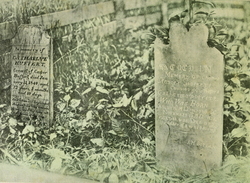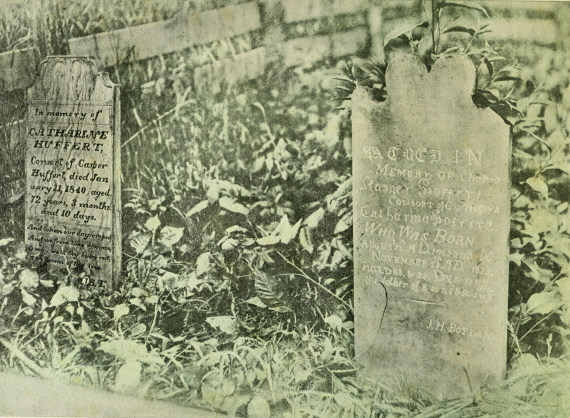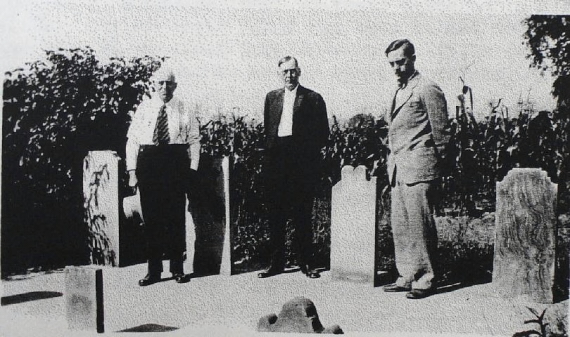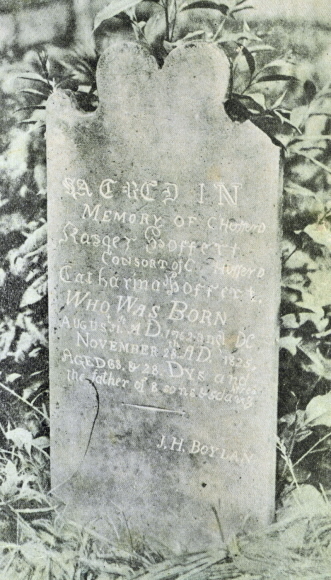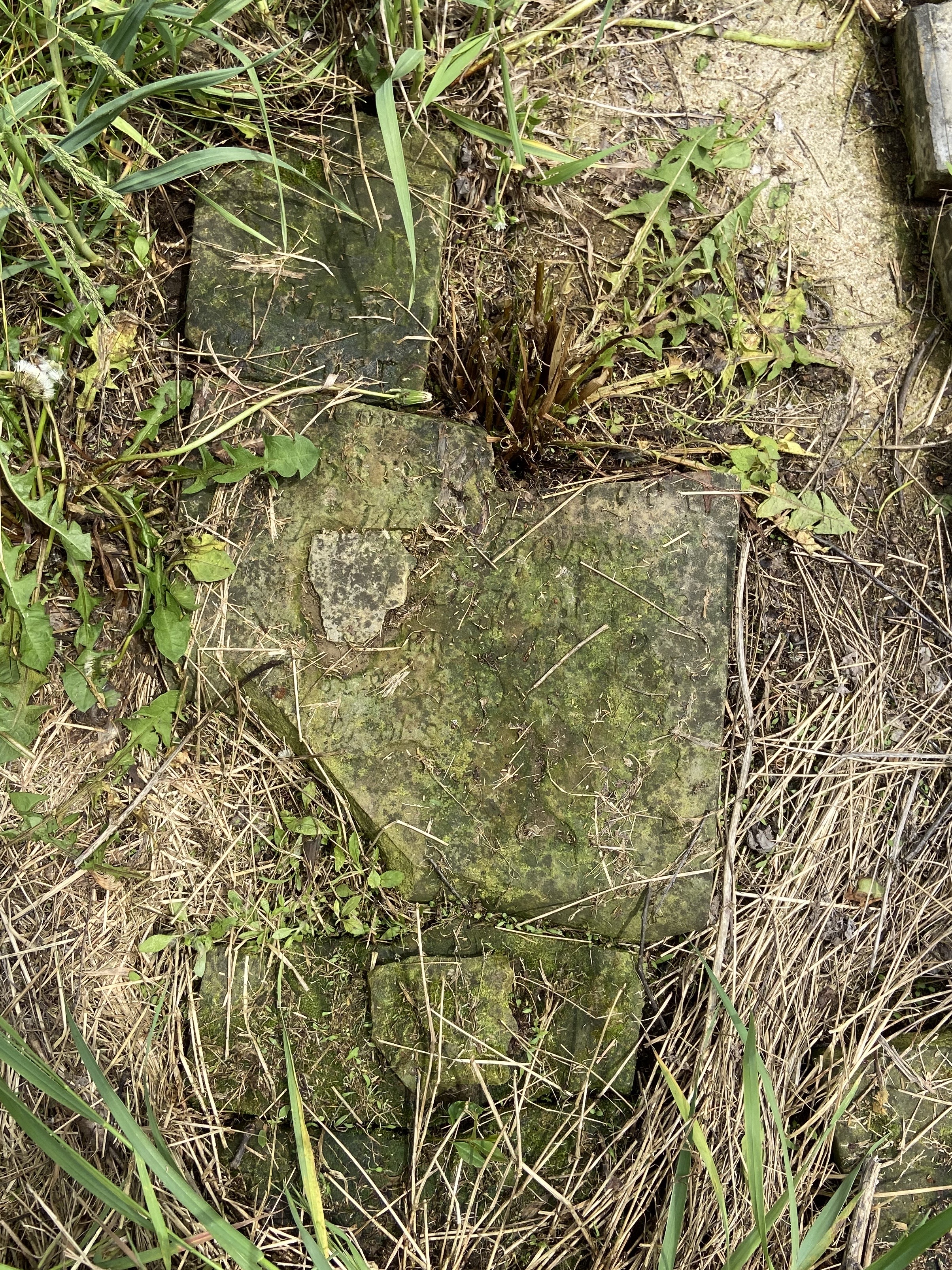Born in Frederick County, Maryland, Casper was the youngest of seven children born to his mother. He was about two years old when his mother died. Soon after his mother died, his father remarried. Casper had ten half-siblings from his father's second marriage.
Casper grew up in Frederick County, Maryland, in an area known in 2009 as Woodsboro. Like most young males of that time, he would have begun working on his father's farm when he was still a boy.
When he was 23 (on March 23, 1786), Casper married Catharine STIHLI at the Evangelical Lutheran Church, in Frederick, Frederick County, Maryland. His bride was 18 years old. Just over two years before, Casper's older brother John (b. 1758) had married Catharine's older sister Elizabeth (b. 1764).
When Casper was about 26, his father died (in 1788).
Casper and Catharine began their family in Woodsboro, a tiny town in Frederick County, Maryland. Their first four of thirteen children were born in Woodsboro. The family moved to Rockingham County, Virginia, where seven more children were born.
They moved to Fairfield County, Ohio, before their son David was born in March 1807. Casper and his family were counted on the 1808 census of Ohio, in Fairfield County. Casper and Catharine's final child (Rebecca) was born there in 1810, and Casper and Catharine lived out the rest of their lives in Fairfield County.
Casper farmed for his entire life. He and Catharine were baptised members of the German Baptist Brethren church. Casper's widow survived him by more than 14 years. His will provided that a house be built for her on land given to their son Solomon.
Casper and Catherine had 13 children. All lived to maturity and had children.
The following is from "A Complete History, Fairfield County, Ohio," by Hervey SCOTT (1795-1876), published by Siebert & Lilley, Columbus, Ohio; copyright 1877. It has been edited slightly for space:
Casper Hufford settled on the Raccoon at an early day. He built the first mill, on the site where Lobenthall's, and since, Mike Moyer's mill stands. It was a small Raccoon Burr Mill, of the capacity of eight or ten bushels of corn a day.
The first religious societies formed in the Raccoon settlements were Dunkers, Mennonites, Presbyterians, Seceders, German Reforms and Methodists.
Schools were kept in small log school-houses about three months in the year. Reading, writing, and "cyphering," as far as the Rule of Three, was the course of instruction. Webster's and Dillworth's spelling-books, and Pike's Arithmetic were used. For readers: The Testament, English Readers, Columbian Orator, and the American Preceptor. This was the English course. Some of the first schools were exclusively German, and others were German and English.
Corn-bread, vegetables, milk & butter, and wild meats constituted the principal subsistence, but even these were sometimes scanty. When the mills were stopped for lack of water, breadstuffs became very scarce, and the neighbors would borrow from one another as long as there was any in the community. Venison was quite plenty, and also wild-turkey. Coffee and tea were dear, and hard to come at. As substitutes, the people used spice-wood and sassafras teas; and for coffee, burned rye and wheat. Pounded and lye hominy were universal. The forms of corn-bread were johnny-cake, hoe-cake, dodger, ash-cake and pone.
The wearing apparel of the settlers was nearly entirely home-made, consisting of flax and tow linens, linsey and flannels. Every farmer raised a patch of flax, from which the linens were made. The flax and tow were spun on handwheels. Wool was carded at first on hand-cards, and afterwards by carding-machines run by water or horse-power. The weaving was done on hand-looms. Every neighborhood had its weavers, and sometimes nearly every house. The girls often spun, wove, and made up their own wedding-dresses in the most primitive times of frontier life. Buckskin pants, and sometimes vests, were very common as men's wear. Shoes were almost wholely home-made, and boots were nearly unknown.
Wolves were very numerous, making it difficult to keep sheep. The State paid premiums for the scalps of wolves. Panthers, bears and wild-cats were plenty, deer abundant. Bear's meat was common. Catamounts were also often seen in the woods. (The catamount is of the feline species, and in size is intermediate between the domestic cat and the American panther. They were greyish, and sometimes spotted). When wounded, or enraged, they were dangerous enemies.
NOTE: The family surname was spelled variously HOFFARTH, HOFFART, HUFFERT, HUFFORD. The different spellings are without meaning. Casper's wife's gravestone is visible in a photo from a 1909 book. On her gravestone, the name was spelled HUFFERT. Most of Casper's sons were buried under the spelling HUFFORD.
D.A.R. information: Of Casper's 13 children, six have proven D.A.R. lines: Solomon, Abraham, Daniel, Jacob, Michael, and Rebecca.
DNA info: Casper's connection to his father has been DNA proven. As of August 2016, the lines of five of Casper's children have been DNA proven: Solomon, Abraham, Elizabeth, Jacob, and David.
Casper's information begins on page 8 of the 1909 Hufford FAMILY HISTORY.
Born in Frederick County, Maryland, Casper was the youngest of seven children born to his mother. He was about two years old when his mother died. Soon after his mother died, his father remarried. Casper had ten half-siblings from his father's second marriage.
Casper grew up in Frederick County, Maryland, in an area known in 2009 as Woodsboro. Like most young males of that time, he would have begun working on his father's farm when he was still a boy.
When he was 23 (on March 23, 1786), Casper married Catharine STIHLI at the Evangelical Lutheran Church, in Frederick, Frederick County, Maryland. His bride was 18 years old. Just over two years before, Casper's older brother John (b. 1758) had married Catharine's older sister Elizabeth (b. 1764).
When Casper was about 26, his father died (in 1788).
Casper and Catharine began their family in Woodsboro, a tiny town in Frederick County, Maryland. Their first four of thirteen children were born in Woodsboro. The family moved to Rockingham County, Virginia, where seven more children were born.
They moved to Fairfield County, Ohio, before their son David was born in March 1807. Casper and his family were counted on the 1808 census of Ohio, in Fairfield County. Casper and Catharine's final child (Rebecca) was born there in 1810, and Casper and Catharine lived out the rest of their lives in Fairfield County.
Casper farmed for his entire life. He and Catharine were baptised members of the German Baptist Brethren church. Casper's widow survived him by more than 14 years. His will provided that a house be built for her on land given to their son Solomon.
Casper and Catherine had 13 children. All lived to maturity and had children.
The following is from "A Complete History, Fairfield County, Ohio," by Hervey SCOTT (1795-1876), published by Siebert & Lilley, Columbus, Ohio; copyright 1877. It has been edited slightly for space:
Casper Hufford settled on the Raccoon at an early day. He built the first mill, on the site where Lobenthall's, and since, Mike Moyer's mill stands. It was a small Raccoon Burr Mill, of the capacity of eight or ten bushels of corn a day.
The first religious societies formed in the Raccoon settlements were Dunkers, Mennonites, Presbyterians, Seceders, German Reforms and Methodists.
Schools were kept in small log school-houses about three months in the year. Reading, writing, and "cyphering," as far as the Rule of Three, was the course of instruction. Webster's and Dillworth's spelling-books, and Pike's Arithmetic were used. For readers: The Testament, English Readers, Columbian Orator, and the American Preceptor. This was the English course. Some of the first schools were exclusively German, and others were German and English.
Corn-bread, vegetables, milk & butter, and wild meats constituted the principal subsistence, but even these were sometimes scanty. When the mills were stopped for lack of water, breadstuffs became very scarce, and the neighbors would borrow from one another as long as there was any in the community. Venison was quite plenty, and also wild-turkey. Coffee and tea were dear, and hard to come at. As substitutes, the people used spice-wood and sassafras teas; and for coffee, burned rye and wheat. Pounded and lye hominy were universal. The forms of corn-bread were johnny-cake, hoe-cake, dodger, ash-cake and pone.
The wearing apparel of the settlers was nearly entirely home-made, consisting of flax and tow linens, linsey and flannels. Every farmer raised a patch of flax, from which the linens were made. The flax and tow were spun on handwheels. Wool was carded at first on hand-cards, and afterwards by carding-machines run by water or horse-power. The weaving was done on hand-looms. Every neighborhood had its weavers, and sometimes nearly every house. The girls often spun, wove, and made up their own wedding-dresses in the most primitive times of frontier life. Buckskin pants, and sometimes vests, were very common as men's wear. Shoes were almost wholely home-made, and boots were nearly unknown.
Wolves were very numerous, making it difficult to keep sheep. The State paid premiums for the scalps of wolves. Panthers, bears and wild-cats were plenty, deer abundant. Bear's meat was common. Catamounts were also often seen in the woods. (The catamount is of the feline species, and in size is intermediate between the domestic cat and the American panther. They were greyish, and sometimes spotted). When wounded, or enraged, they were dangerous enemies.
NOTE: The family surname was spelled variously HOFFARTH, HOFFART, HUFFERT, HUFFORD. The different spellings are without meaning. Casper's wife's gravestone is visible in a photo from a 1909 book. On her gravestone, the name was spelled HUFFERT. Most of Casper's sons were buried under the spelling HUFFORD.
D.A.R. information: Of Casper's 13 children, six have proven D.A.R. lines: Solomon, Abraham, Daniel, Jacob, Michael, and Rebecca.
DNA info: Casper's connection to his father has been DNA proven. As of August 2016, the lines of five of Casper's children have been DNA proven: Solomon, Abraham, Elizabeth, Jacob, and David.
Casper's information begins on page 8 of the 1909 Hufford FAMILY HISTORY.
Inscription
SACRED IN
Memory of
Kasper Hoffert,
Consort of
Catharina Hoffert,
Who Was Born
August 31st A.D. 1762 and Died
November 28th A.D. 1825,
Aged 68 & 28 Dys and
the father of 8 sons & 5 daus.
------
J.H. Boylan
Gravesite Details
Around 1909, gravestone was in good condition as shown in a photo. By 1981, the stone was broken along with the other few stones. The stones were in a tangled mess amidst the broken concrete in which they had once been reset.
Family Members
-
![]()
Solomon Hoffert Sr
1786–1876
-
![]()
Abraham Hufford Sr
1788–1859
-
![]()
Elizabeth Hoffert Henricks
1790–1876
-
![]()
Catharine "Kitty" Hufford Friesner
1792–1853
-
![]()
Daniel Hufford
1795–1858
-
![]()
Sarah Saloma Hoffert Henricks
1796–1877
-
![]()
Jacob Staley Hoffert
1798–1884
-
![]()
Susannah Hoffert Beery
1800–1849
-
![]()
John Hufford
1801–1825
-
![]()
Christopher Hufford
1803–1887
-
![]()
Michael William Hufford Sr
1804–1875
-
![]()
David Hufford Sr
1807–1882
-
![]()
Rebecca Hufford Clabaugh
1810–1882
